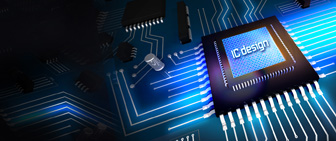SK Hynix is reportedly preparing a major ramp-up of its next-generation 1c DRAM production, with plans to increase capacity eightfold in 2026 to meet rising demand for high-performance general-purpose memory in server and accelerator systems. The chipmaker is expected to boost output of GDDR7 and SOCAMM2 modules built on the 1c platform to support growing orders from Nvidia and global cloud service providers.
The 2025 Intel Technology Innovation and Industry Ecosystem Conference was held from November 19 to 21, 2025, in Chongqing, China. At the event, Intel CEO Lip-Bu Tan and newly appointed chairman of Intel China Alan Wang both made their first public appearances in China following their appointments. They took office in March and September 2025, respectively. In contrast to former CEO Pat Gelsinger, their remarks focused heavily on AI.
Rapid advances in AI technology have exposed fundamental network bottlenecks, since traditional connections can no longer keep up with the massive transmission demands of AI. Billions of dollars have thus been funneled into photonic chip startups, amid an ongoing seismic shift in how chips communicate.
ASML has inaugurated a technical training center in Phoenix, Arizona, designed to train more than 1,000 engineers annually for the expanding semiconductor industry in the US. The 56,000-square-foot facility is ASML's ninth global training site and the only one in the US covering all product lines, including extreme ultraviolet (EUV) and deep ultraviolet (DUV) lithography machines as well as metrology inspection systems.
The Ministry of Economic Affairs (MOEA) announced on November 20 that Taiwan's export orders reached US$69.37 billion in October 2025, down slightly by US$850 million or 1.2% from September but up significantly by US$13.92 billion, or 25.1%, compared to the same month of 2024. In New Taiwan dollars, this represents a 19.4% increase year-over-year. Cumulative export orders from January to October 2025 nearly hit US$600 billion, marking a 22.6% annual growth.
The White House is reportedly pressuring Congress to exclude the Guaranteeing AI National Access and Innovation (GAIN AI) Act from the upcoming National Defense Authorization Act (NDAA), sources told Bloomberg and Axios. The move could benefit chipmakers Nvidia Corporation and Advanced Micro Devices (AMD) by preventing export restrictions to China.
Samsung Electronics is reportedly planning to raise the monthly output of its next-generation 2nm foundry process to as many as 21,000 wafers by the end of 2026, according to new industry projections. The increase would represent a 163% jump from 2024 and could significantly narrow the company's long-standing performance and capacity gap with TSMC.
Electronics components distributor Audix saw its manufacturing division revenue drop 13% year-on-year in the first three quarters of 2025. Its share of voice coil motor (VCM) products is also declining, affected by weak end-market demand and China's rare earth export controls. Audix stated that it has switched production lines to non-rare-earth magnets to reduce geopolitical impact and is simultaneously expanding AI server testing capacity, with revenue contributions expected to emerge gradually.
US semiconductor company Marvell Technology has announced plans to significantly increase its workforce and research spending in India, aiming to meet the surging global demand for AI infrastructure. Navin Bishnoi, Marvell's India head, told Reuters the company intends to grow its 1,700-strong Indian team by 15% annually over the next three years, though details of the expanded R&D budget were not disclosed.
WPG Holdings, a major semiconductor component distributor, hit a new record with its operating profit exceed NT$5 billion (US$160.1 million) for the first time in the third quarter of 2025. AI-driven demand for servers and supply chain services has made core components and memory the two primary growth engines. Computing-related core components accounted for about 40%, and memory 27%.
Sumitomo Chemical announced it will acquire all shares of Asia Union Electronic Chemical Corp, a Taiwanese manufacturer of semiconductor cleaning agents, with the deal expected to be completed by the end of 2025. The transaction amount has not been officially disclosed but is estimated at around JPY10 billion (approx. US$63.85 million), according to Nikkei Asia.
More coverage



